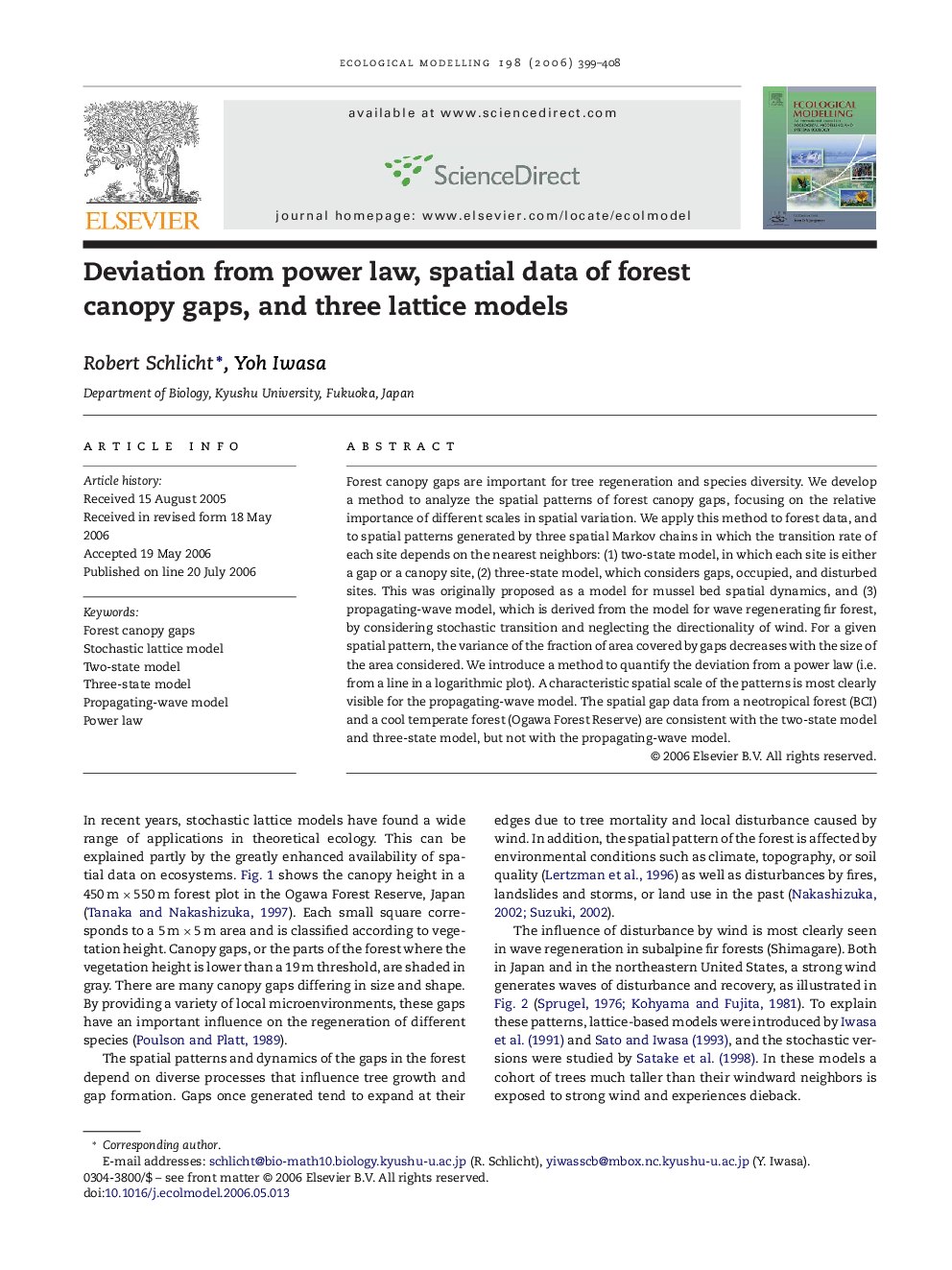| Article ID | Journal | Published Year | Pages | File Type |
|---|---|---|---|---|
| 4379064 | Ecological Modelling | 2006 | 10 Pages |
Abstract
Forest canopy gaps are important for tree regeneration and species diversity. We develop a method to analyze the spatial patterns of forest canopy gaps, focusing on the relative importance of different scales in spatial variation. We apply this method to forest data, and to spatial patterns generated by three spatial Markov chains in which the transition rate of each site depends on the nearest neighbors: (1) two-state model, in which each site is either a gap or a canopy site, (2) three-state model, which considers gaps, occupied, and disturbed sites. This was originally proposed as a model for mussel bed spatial dynamics, and (3) propagating-wave model, which is derived from the model for wave regenerating fir forest, by considering stochastic transition and neglecting the directionality of wind. For a given spatial pattern, the variance of the fraction of area covered by gaps decreases with the size of the area considered. We introduce a method to quantify the deviation from a power law (i.e. from a line in a logarithmic plot). A characteristic spatial scale of the patterns is most clearly visible for the propagating-wave model. The spatial gap data from a neotropical forest (BCI) and a cool temperate forest (Ogawa Forest Reserve) are consistent with the two-state model and three-state model, but not with the propagating-wave model.
Related Topics
Life Sciences
Agricultural and Biological Sciences
Ecology, Evolution, Behavior and Systematics
Authors
Robert Schlicht, Yoh Iwasa,
